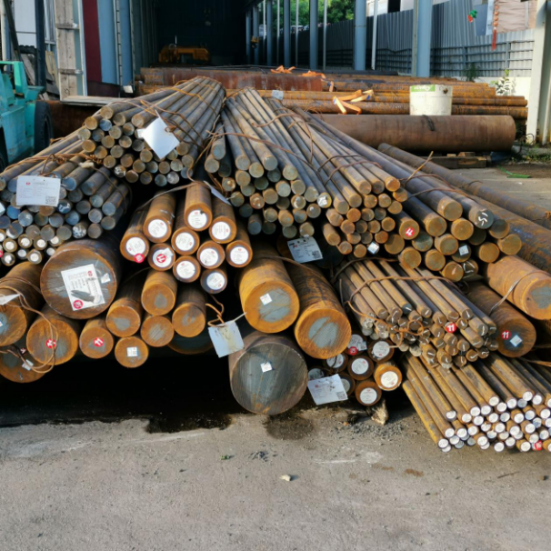The Birth of Round Steel: From Ore to Bar
Ever wondered how that shiny round steel bar ends up in your favorite construction project? Well, it all starts with iron ore, which is basically the rock star of the steel world. The process begins with mining the ore, which is then crushed and mixed with coke (not the soda, folks) and limestone. This mixture is heated in a blast furnace, where the magic happens. The coke burns, producing carbon monoxide that reduces the iron ore to molten iron. After that, it’s all about shaping and cooling, leading to the birth of our beloved round steel. Jindalai Steel Group Co., Ltd. is one of the top round steel manufacturers, ensuring that the world gets its fill of high-quality steel bar
Low vs. High Carbon Steel: The Softies and the Hardies
Now, let’s talk about the difference between low-carbon steel (like Q235) and high-carbon steel (like C45). Picture this: low-carbon steel is like that laid-back friend who’s easy to bend and go with the flow, while high-carbon steel is the tough guy who’s hard and a bit brittle. The secret lies in their carbon content. Low-carbon steel has less carbon, making it softer and more ductile, which means it can be easily shaped without breaking. On the other hand, high-carbon steel has more carbon, which increases its hardness but also makes it more prone to cracking. So, if you’re looking for flexibility, go low; if you want strength, go high!
The Four Processes: Transforming Round Steel
Once we have our round steel, it doesn’t just sit around looking pretty. It undergoes four key processes: normalizing, annealing, quenching, and tempering. Normalizing involves heating the steel and then letting it cool in the air, which refines its grain structure. Annealing is like a spa day for steel, where it’s heated and then slowly cooled to relieve stress and improve ductility. Quenching is the dramatic moment where the steel is rapidly cooled in water or oil, hardening it but also making it a bit brittle. Finally, tempering is the balancing act, where the steel is reheated to reduce brittleness while maintaining strength. It’s like a rollercoaster ride for your round steel!
Market Forces: What Drives Round Steel Prices?
Now, let’s get down to the nitty-gritty of the round steel market. What makes those prices fluctuate like a teenager’s mood? First up, we have supply and demand. When construction booms, demand for round steel skyrockets, pushing prices up. Next, we have raw material costs. If iron ore prices go up, you can bet your bottom dollar that round steel prices will follow suit. Then there’s the global economy; a strong economy means more construction and higher prices, while a downturn can lead to a price drop. Don’t forget about trade policies and tariffs, which can also impact costs. Lastly, let’s not overlook the competition among manufacturers like Jindalai Steel Group Co., Ltd., which can lead to price wars that keep consumers on their toes.
Conclusion: The Round Steel Adventure
So there you have it, folks! From the birth of round steel in the depths of a blast furnace to the complexities of carbon content and the rollercoaster of market prices, round steel is a fascinating world. Whether you’re a construction guru or just someone who appreciates a good steel bar, understanding the journey of round steel can make you appreciate it even more. So next time you see a round steel bar, give it a nod of respect—it’s been through quite the adventure!
Post time: Nov-05-2025









